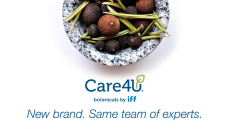Tea waste rich with extractable antioxidants
catechins, as the new and expensive green tea leaves used by the
supplements industry, according to Iranian research to be published
later this month in peer-reviewed journal Food Chemistry.
The study, carried out by the Ferdowsi University of Mashhad, investigated three extraction methods on different parts of the tea plant, and tea waste, and found surprisingly high levels of antioxidants across all of the extracts.
Tea leaves that have already matured on the plant and the waste that is left after fermenting black tea, "are often considered as agricultural wastes", said Dr Reza Farhoosh, the author of the study. But they "could be used as potent natural antioxidative sources".
European demand for tea extracts is currently surging, having reached 500 metric tonnes by 2003. With tea prices at around $1.5 per kg, the possibility of cheaper raw materials could shift the industry's cost base.
Green tea and green tea extracts are currently produced from only the first two to four leaves of the tea plant (Camellia sinensis). The other leaves are known as old tea leaves (OTL). Fermenting the green tea leaves produces black tea, and obviously produces black tea waste (BTW).
The Iranian study reported high extraction yields of polyphenols from OTL and BTW, including epigallocatechin gallate (EGCG), one of the most widely researched polyphenols in green tea.
Three different extraction media were studied, using hot water, methanol or ethyl acetate. For both green tea and black tea waste, the most efficient of the three methods was hot water extraction, which delivered yields of 35 per cent for fresh green tea leaves and a close-running 30 per cent for BTW.
Extracts from green tea are now well established as sources of polyphenols - containing a rich source of free radical scavenging catechins. Recent data suggests these compounds play a beneficial role in weight loss, cardiovascular and oral health, with some now emerging as particularly powerful.
This has seen companies such as DSM, with its Teavigo boasting 95 per cent purity of epigallocatechin gallate (EGCG), and Taiyo International, with its Sunphenon claiming more than 90 per cent purity, position themselves firmly in specific catechin markets.
The Iranian research was presented at the 6th International Conference on Food Science and Technology, and is available online from the Elsevier journal Food Chemistry.











